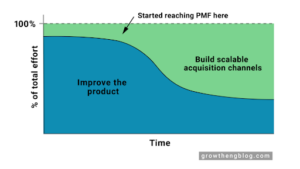With the global economy facing increasing uncertainty, we’re publishing a series on using data to help your company survive.

In our previous entry, we discussed the core metrics to watch during a tightening market and why they’re especially important now. In this piece, we’ll focus on getting data engineers, scientists, analysts, and anyone else directly working with the data to actually use it — not just move it around — and where to focus to get maximum impact.
Gauges and pedals
The best indicators are intuitive, almost automatic. Red telling you to stop, whether it’s a wall of brake lights on the highway or an aposematic snake.
Indicators are great, but require two critical components to matter — a way of taking action and time for that action to have its effect. An alert about red lights ahead isn’t useful after your car has violently melded into the bumper of another.
Start-ups have a lot of disadvantages compared to the legacy companies they aspire to disrupt — fewer customers, less recognition, and less capital. Where they have a huge advantage is agility: the ability to change their business to adapt to the demands of the market and enact that change more rapidly than industry veterans.
When capital markets restrict, there’s generally a reduction in spend on marketing and R&D. A reduction in spend means a more uncertain signal from the data, and thus a greater role of human interpretation.
A perniciously bad habit among data engineers and analysts is to feel apart from the business. Once they’ve created a clean data pipeline with all the marketing, sales, inventory, and revenue data funneled into a data warehouse, then whipped up a dizzying array of pretty charts, they’re free to kick their feet up. The various business units at the company are tasked with using the data from there.
A dashboard that isn’t useful to the business is like a great book in a language nobody can read.
Paying data engineers, scientists, and analysts to move your data but not use it isn’t a good use of resources, especially when you’re concerned about spending. Everyone should be focused on using their skills to help drive revenue.
Get analytics directly involved with business
Kayak famously had a red phone which would allow site visitors to ring directly through to the development team. This wasn’t because developers are great (or cost-effective) customer service agents — it’s to keep the people building the tools close to the people using them.
While companies should always be focusing on their customers, during tight markets it’s even more critical to hear what pains your customers are facing and address them.
This is an opportunity to get whoever is working with your data — engineers, data analysts, leaders on various teams — all pulling in the same direction on projects like building out critical financial models and assessing the most valuable customers.
Identifying your most profitable customers and assessing their characteristics and behaviors is a great example because it can impact so many teams and influence a number of strategic decisions.
- These customers might value your product the most — insights about their preferences and usage can inform your product decisions.
- These customers have traits you should be considering for your ideal customer profile (ICP). For B2B, did they come from the same incubator? Are they vertically-focused in a specific field? Are there more subtle details, like a lot of champions with a specific job title? For B2C, are they coming from a specific ad channel? Are there demographic details that could influence your brand or advertising strategies?
- You need to be worried about churn or customers not returning. Identify behaviors that lead to this loss and take a closer look at your most valuable customers to see if you need to head that problem off now.
There are plenty of other potential applications for this data — what matters is you get to this as quickly as you can, so you can start asking questions, making informed decisions, and running intelligent experiments.
Getting your teams to pull in the same direction also matters because if you end up decreasing spend on marketing experiments, you’ll have a weaker signal — something mentioned above, but worth returning to. With smaller tests, you have to be very sure that trends you see in the data are strong enough to act on.
This ends up requiring more human interpretation, so you need the right people looking at the data and asking questions. You’re looking to firmly accept or reject the hypotheses you built your experiments on. This is where a team like RevOps, that already has to touch so many facets of the business, can really shine if they’re close to the data.
This brings us back to the idea of gauges and pedals. Anyone, regardless of title, taking on an analytics role should be accelerating your business. In an economic downturn, you can’t afford to waste engineering cycles working on the wrong part of your product. You don’t want to throw money into the wrong ad channels.
Gauges are your reports. You need them, but without business knowledge, they don’t really tell you how to act. Your analytics people need to be pointing your teams toward the right pedals to push and helping build those pedals.
There are a number of important decisions to be made when the economy is struggling. Hear from our Co-Founder and CEO on why growth isn’t the most important metric right now.


